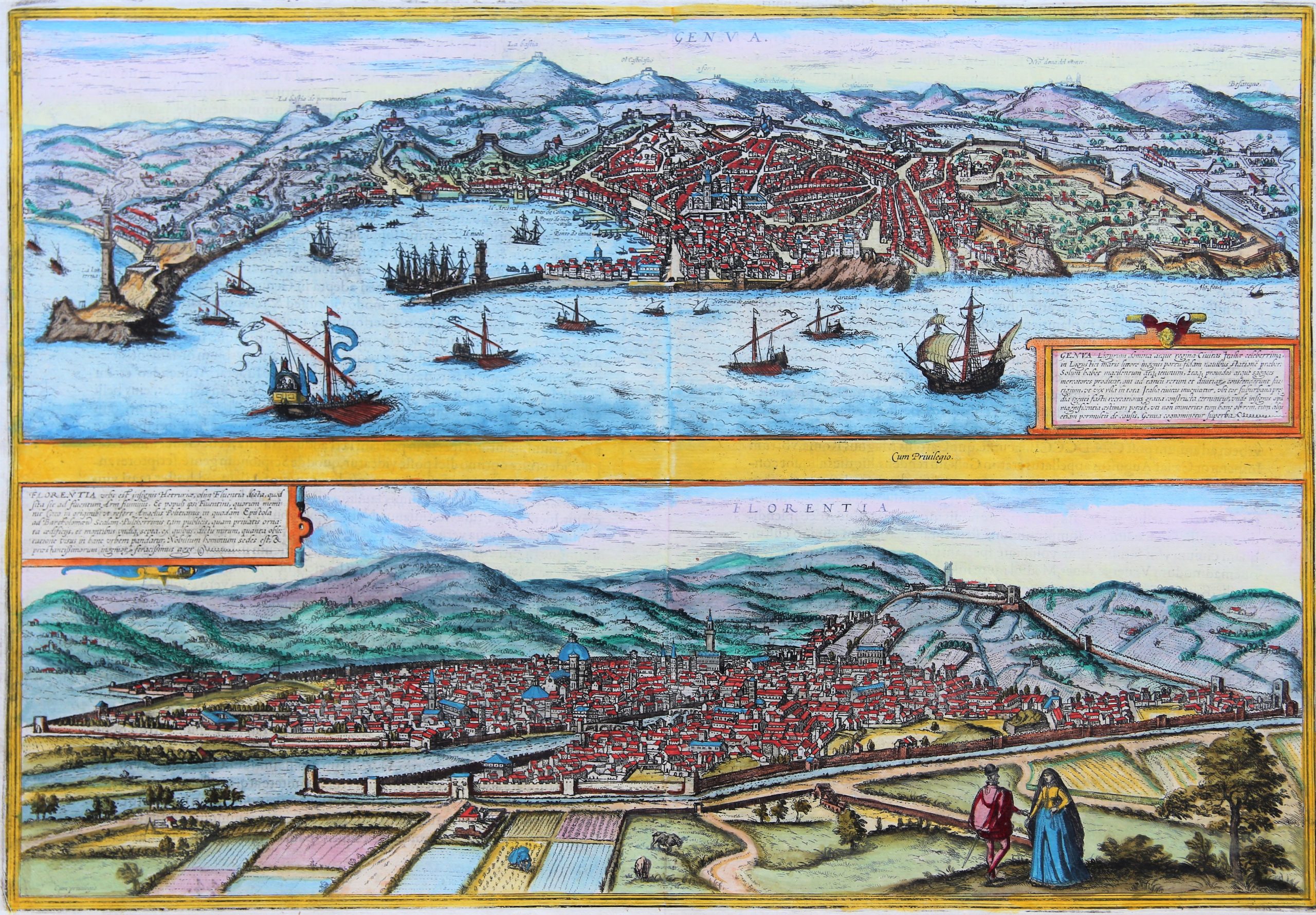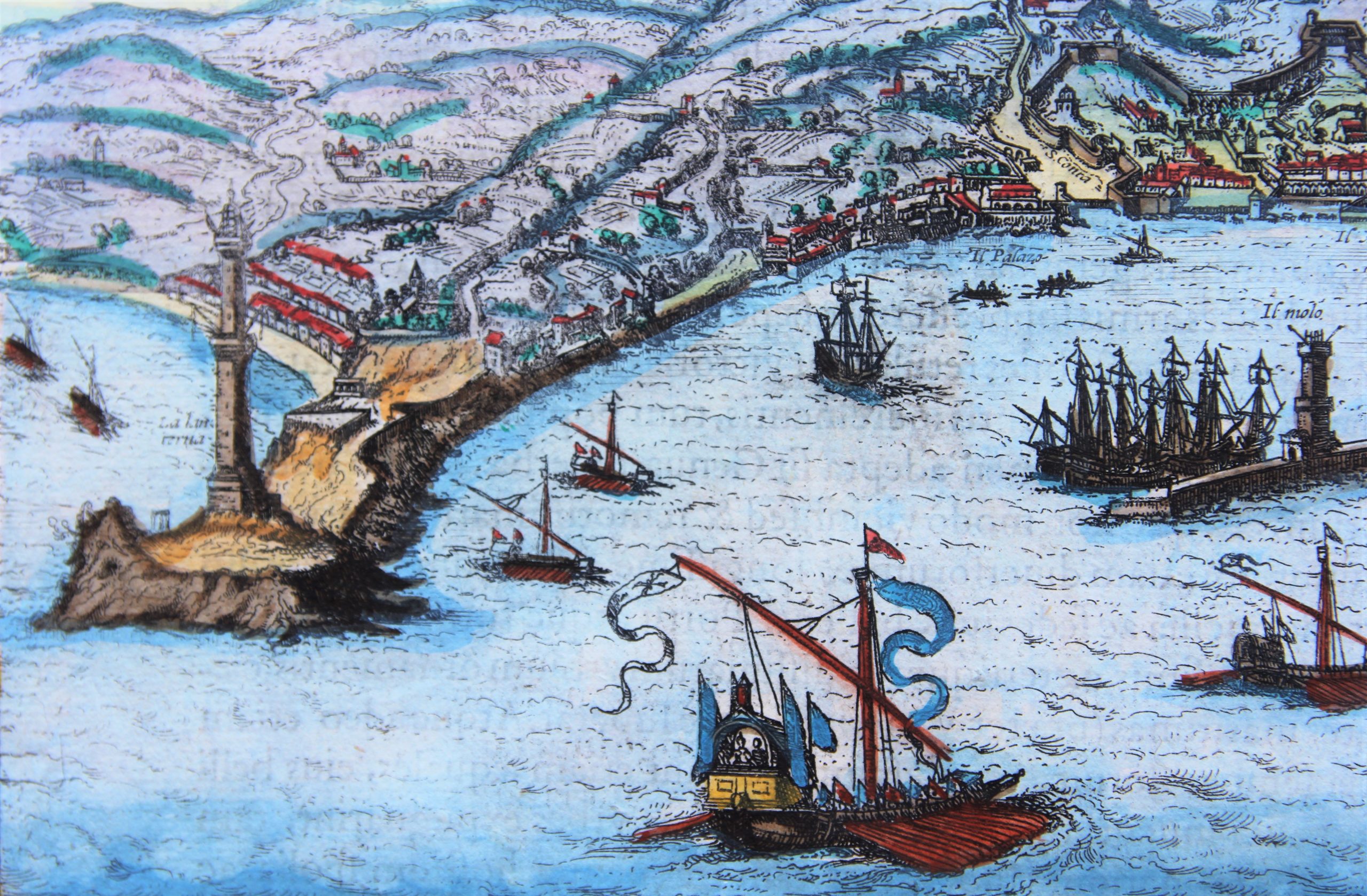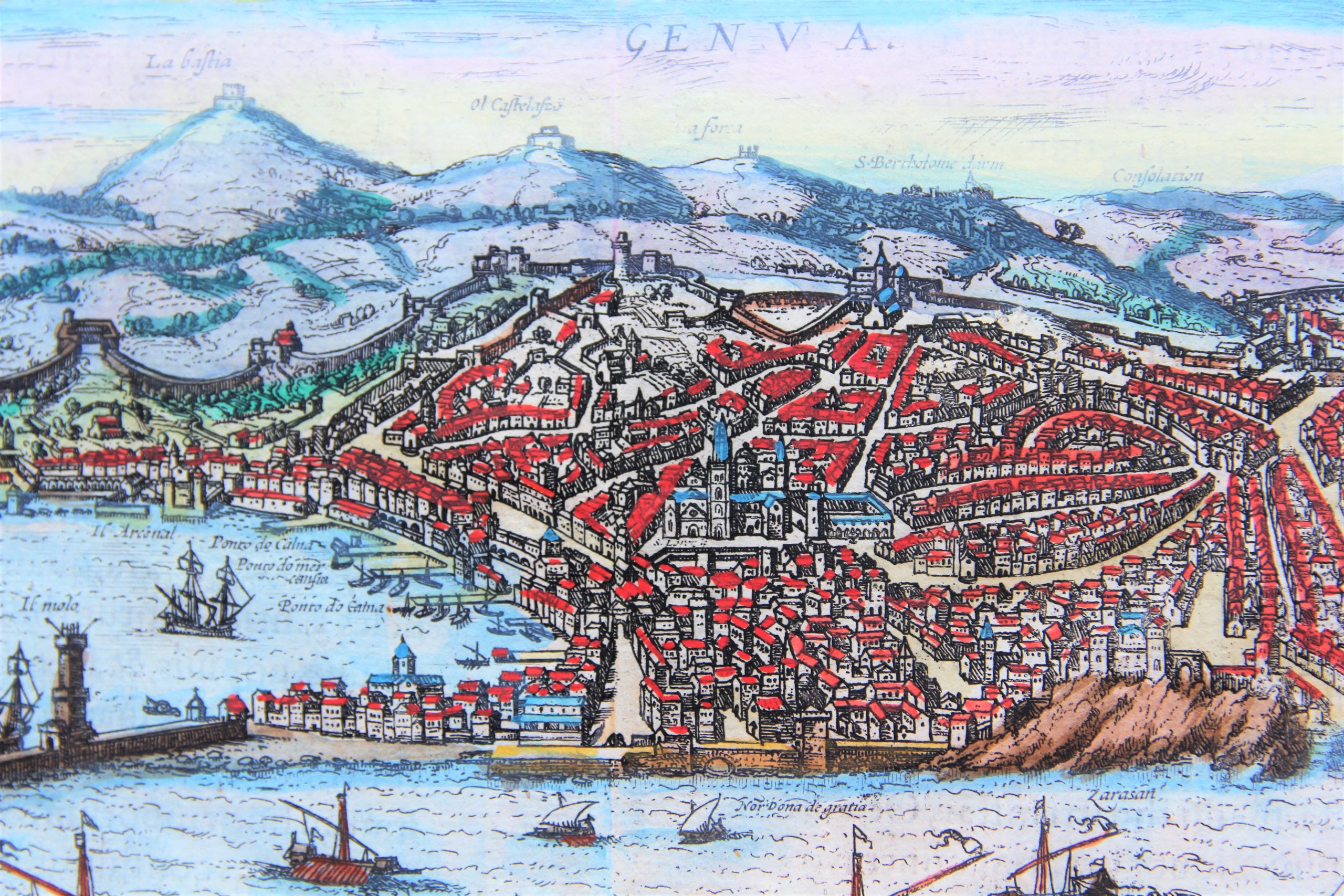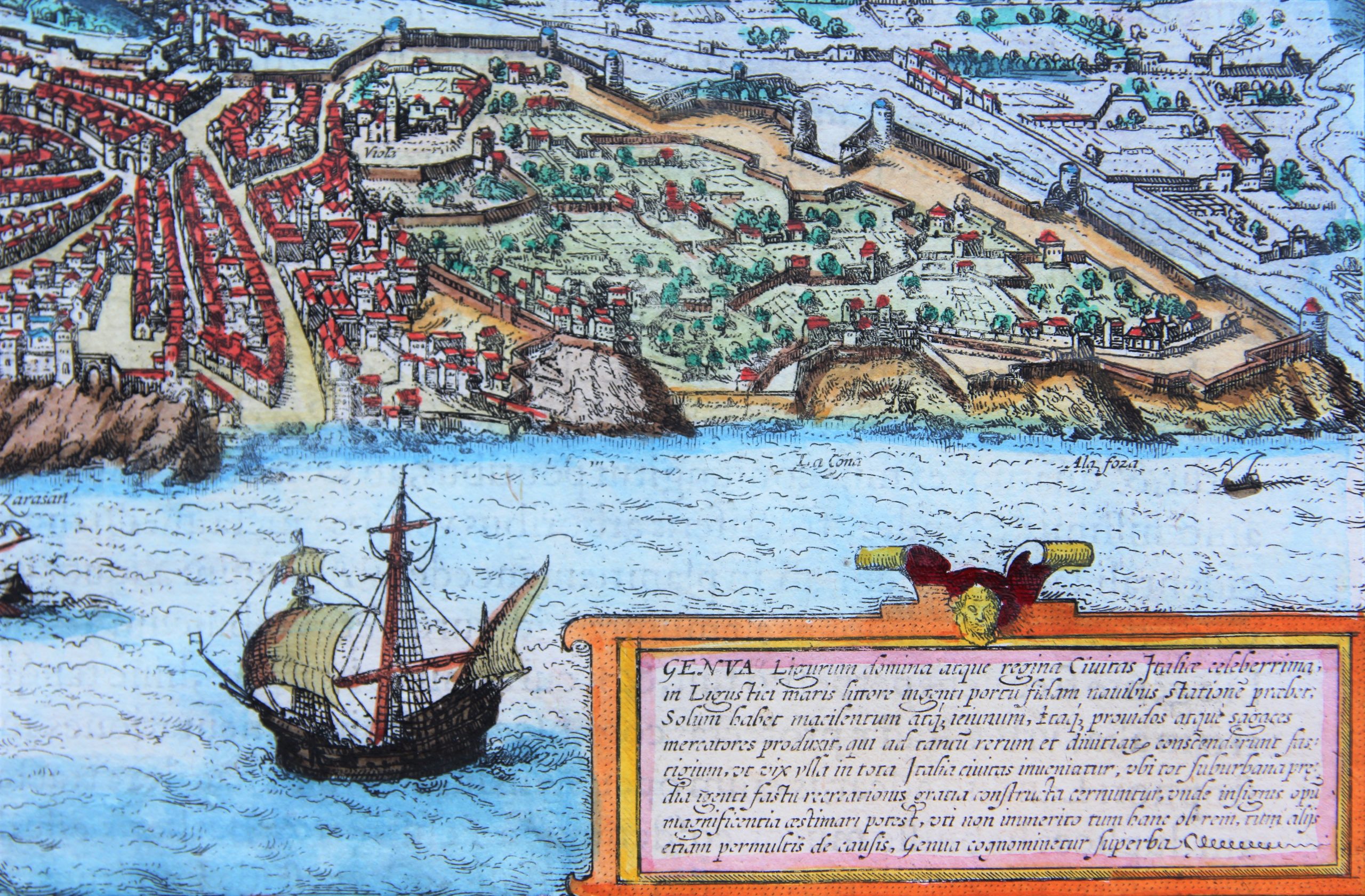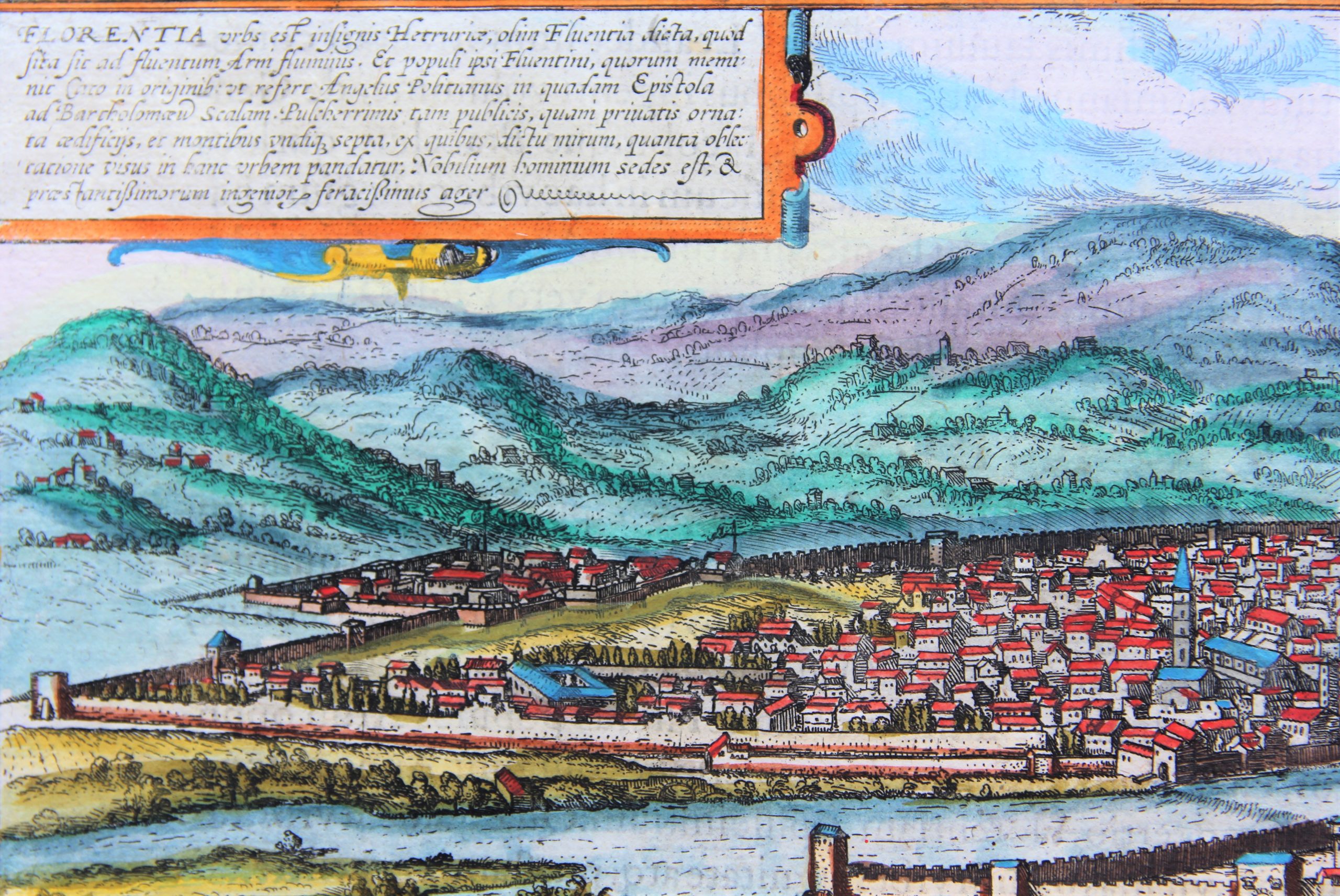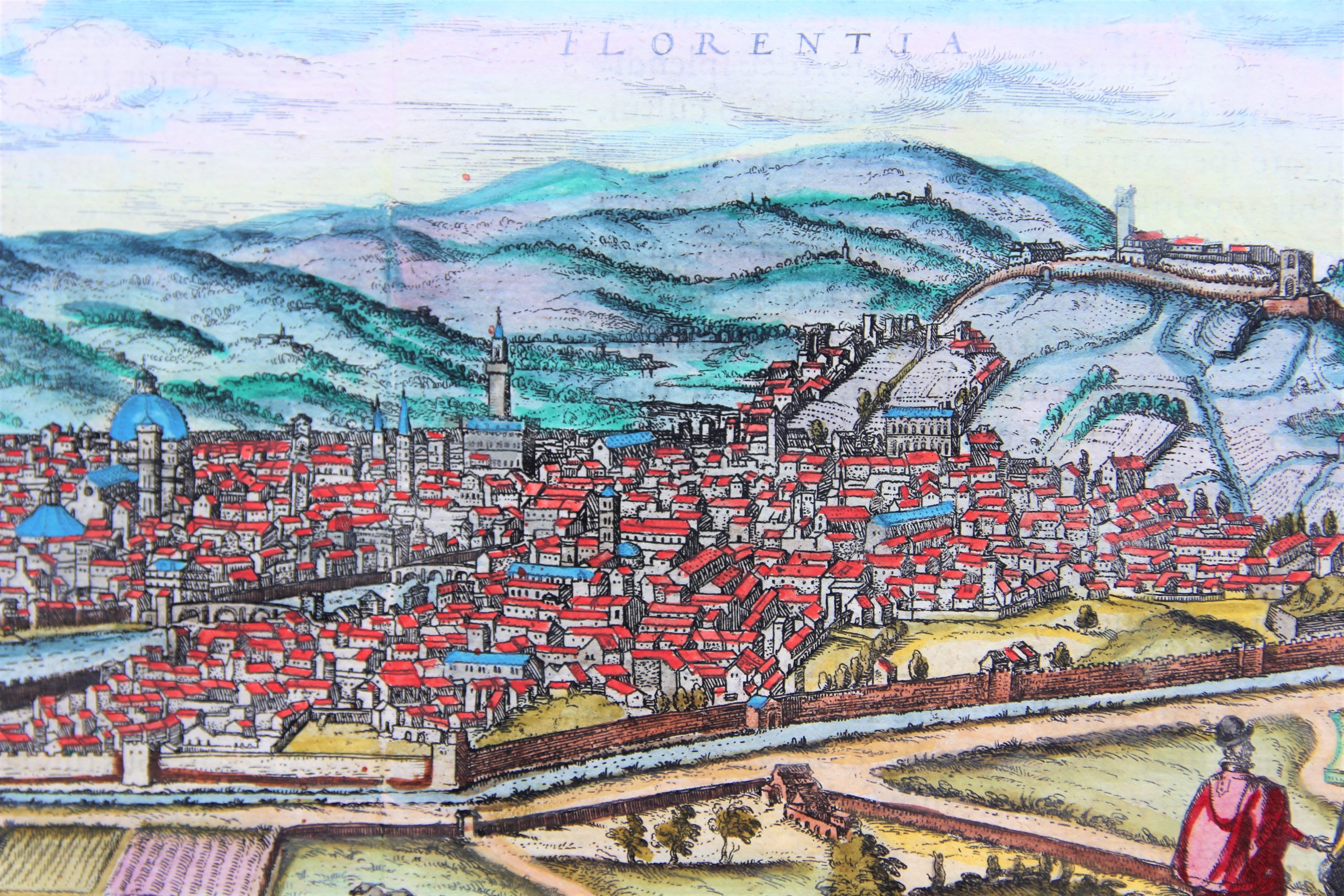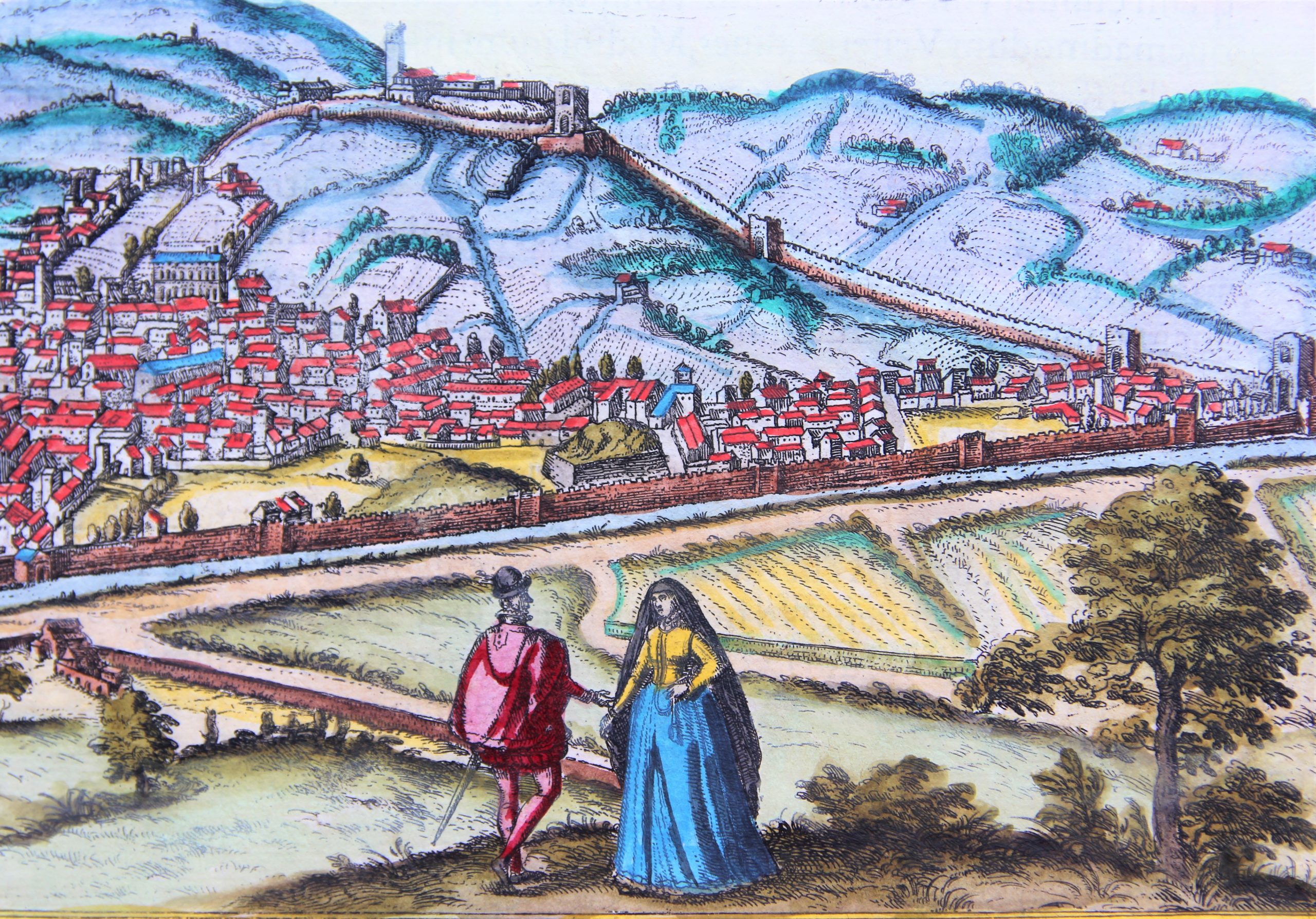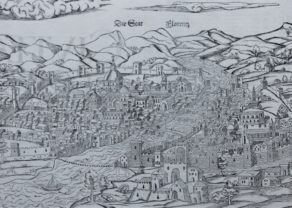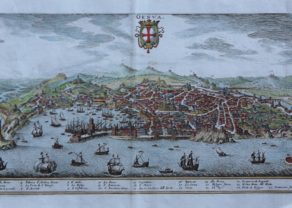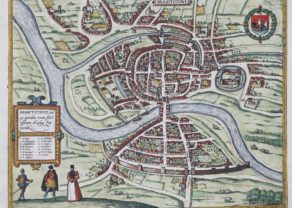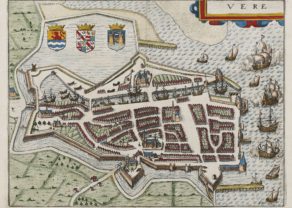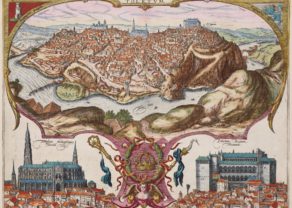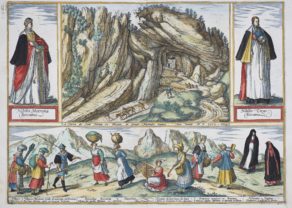Genoa and Florence
A fabulous double view
Detail
Date of first edition: 1572
Date of this map: 1572 (but second state: with mention “cum previligio”)
Dimensions (not including margins): 33,2 x 47,5 cm
Dimensions (including margins): 42,5 x 54,5 cm
Condition: Excellent. Sharp copper print. Wide margins. Centre fold as published. Nice original colouring.
Condition rating: A+
Verso: text in Latin
Map references: Van der Krogt 1501; Taschen, Br. Hog., p. 110
From: Civitates Orbis Terrarum, Vol. I; Van der Krogt 41:0, page 44
In stock
Genoa commented by Braun
“Genoa, the capital of Liguria, is a powerful, proud and very ancient city. […] It has an extremely well fortified and safe harbour and is also famous for its honest merchants. In all periods it has produced excellent merchants who deal by water and land in all things. […] It currently recognizes the King of Spain as its supreme lord and is ruled by a duke who is appointed afresh every year.”
TRANSLATION OF CARTOUCHE TEXT: Genoa, mistress and queen of Liguria, illustrious city in Italy, provides a safe anchorage for ships with her huge harbour on the coast of the Ligurian Sea. The city has a poor and barren soil, a fact that has produced shrewd and prudent merchants. These latter have raised it to such prosperity in goods and wealth that in all Italy there is barely another city before whose gates lie so many country estates, built purely for leisure and with incredible pride. It can be judged from this that the Genoese parade their wealth ostentatiously: not without reason does the city […] bear the epithet “the proud”.
Taschen on Genoa
The trading port and city of Genova is presented from an ideal, elevated viewpoint from the south. The layout of the city can be clearly seen as it slopes down to the sea. In the centre stands the Romanesque cathedral of San Lorenzo, built in the 13th century. Higher up the hillside lies the Palazzo Ducale, here still as a medieval complex from the 13th century. The approximately 80-m-high lighthouse (La lanterna) on the left is another symbol of the city. Genoa’s economic importance is underlined by the volume of shipping in front of the port; the New World was discovered in 1492 by the Genoa born Columbus. 1407 saw the founding in Genoa of the Banco di San Giorgio, which lent money to various monarchs in the early modern era and thereby earned Genoa an exceptionally important position within the network of Europe’s ruling houses.
Firenze commented by Braun
“For just as Venice is called the rich, Milan the great, Genoa the proud, Bologna the fertile, Ravenna the ancient, Naples the noble and Rome the holy city, so Florence is called the beautiful. It has magnificent churches, of which Santa Maria del Fiore is particularly wonderful: it is built of marble and beside it stands a tower, also of marble, quite magnificently furnished with bells.”
CARTOUCHE: Florence is a distinguished city in Etruria, formerly called Fluentia, because it lies on the stream of the River Arno. […] Embellished with beautiful public and private buildings and surrounded by hills on all sides, Florence is the residence of famous men and a most fertile field for outstanding talents.
Taschen on Firenze
The engraving shows Florence from the southwest. On the far side of the Arno, the cathedral of Santa Maria del Fiore with its impressive cupola (1418-1436) by Filippo Brunelleschi soars above the roofs of the densely packed houses. Visible in front of it are the bell tower, built from 1330 to designs by Giotto, and the Baptistery (11th-12th cent.) with its magnificent bronze doors by Andrea Pisano and Lorenzo Ghiberti (1330-1452). Behind it to the right, as a symbol of secular power, is the Palazzo della Signoria (14th cent.), today known as the Palazzo Vecchio, with its 94-m-high tower. Florence was founded as a Roman colony in Caesar’s day, when it marked the intersection of two major trade routes. In the 14th and 15th centuries it developed into a city of art and culture, attracting many artists and intellectuals, including Sandro Botticelli, Galileo Gallilei, Leonardo de Vinci and Niccolo Machiavelli. Under the rule of the Medici family, Florence also developed into an important centre of finance and trade. With a population of around 366,000, Florence is today the capital of Tuscany.

